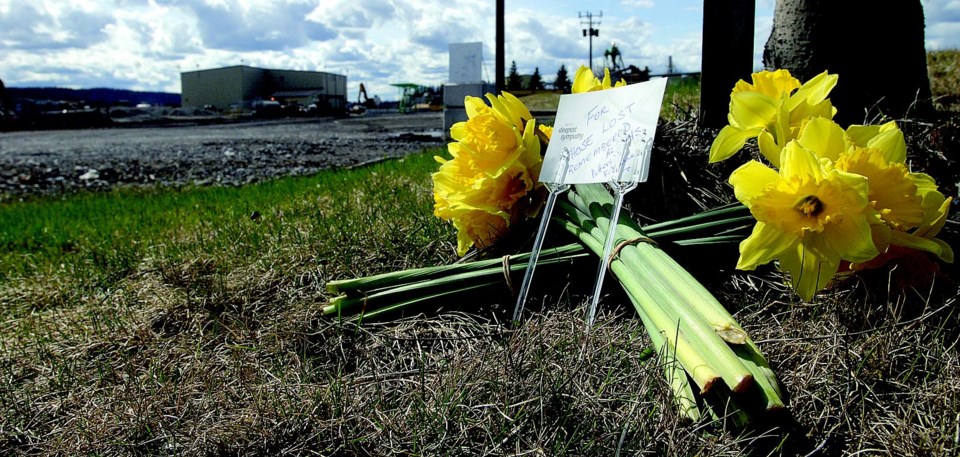In response to an outcry from mill workers worried about the safety of their workplace after two deadly sawmill explosions in less than three months, WorkSafeBC has issued a new directive to govern how B.C. lumber mills deal with sawdust.
Starting May 16, all 377 sawmills in the province will be ordered to immediately remove sawdust from wood processing plants.
"It simply says that if we're going to err on the side of safety, let's get the combustibles out of the mill," said Stephen Hunt, district director for Western Canada for the United Steelworkers, which represents 150 unionized workers at Lakeland Mills.
"We know sawdust, in enough quantity, can explode. We're not suggesting that's what happened in Prince George or at Burns Lake, but that's the step we're going to take."
The new regulations also require mill operators to identify all sources of ignition and develop protocols to deal with them as a potential hazard.
After the Lakeland Mills sawmill exploded Monday night, killing two workers and injuring 22, the United Steelworkers sent a letter to WorkSafeBC and Labour Minister Margaret MacDiarmid, demanding the release of information gathered in the investigation of the Babine Forest Products mill explosion in Burns Lake on Jan. 20 that killed two and injured 19.
"Workers in this country have the right to know what hazards they face in all workplaces and when workers come to the union and say, 'What is going on?' and we don't know, that's not acceptable," Hunt said.
On Tuesday, WorkSafeBC ordered all sawmills to conduct risk assessments and safety reviews to try to identify the cause of mill explosions at Lakeland and Burns Lake.
"We are directing all sawmills to do this top-to-bottom risk assessment of their facility and it does refer to existing regulatory requirements about combustible dust," said Donna Freeman, WorkSafeBC's director of media relations. "This is a unique situation for us to issue a blanket directive to all employers in a certain classification to do this. This is a very direct order specifically looking at combustible dust and potential ignition sources, given the circumstances recently."
Investigators have yet to pinpoint what caused either mill fire, but wood dust is an obvious suspect.
"There's a common factor here and we're all aware of it and it's sawdust," said MacDiarmid. "So although we don't know what caused the initial fires or explosions, we know that sawdust may be a factor."
Hunt, a former director for WorkSafeBC, says he can't recall any time when a government ministry so quickly responded to a safety concern by issuing an industry-wide order.
"It really is extensive," Hunt said. "Everybody in the industry -- workers, employers and regulators -- are working together in this to find a very immediate solution. There's some urgency here to get this thing going rather than waiting and hoping something else doesn't happen."
WorkSafeBC has released preliminary information on Lakeland Mills to union investigators and Hunt said no unsafe work practices were identified.
"[WorkSafeBC] gave us what they could from Burns Lake without compromising that investigation, which is not completed. When Burns Lake happened none of us knew what was going on. We actually treated it like a perfect storm. Was it because it was too cold, was there additional static electricity? All those questions that people speculate on are often times dangerous, so we'll let the investigators finish it."
Pine beetle-killed trees make up much of the forest products being sent to B.C. interior mills. Because those logs are drier than healthy trees, some observers are suggesting there's more dust being produced in the mills when they are cut into lumber.
"We've been cutting dead pine for 30 years, so this is not a new thing, but perhaps we're doing some things in mills now we haven't done before," said Hunt. "In the interests of productivity, we're making finer cuts trying to save more wood and maybe that powders up the dust more. If so, what are we doing about that? Is there a chemical being applied to it that increases the volatility? We don't know. So to eliminate those possibilities, we're eliminating the source."



